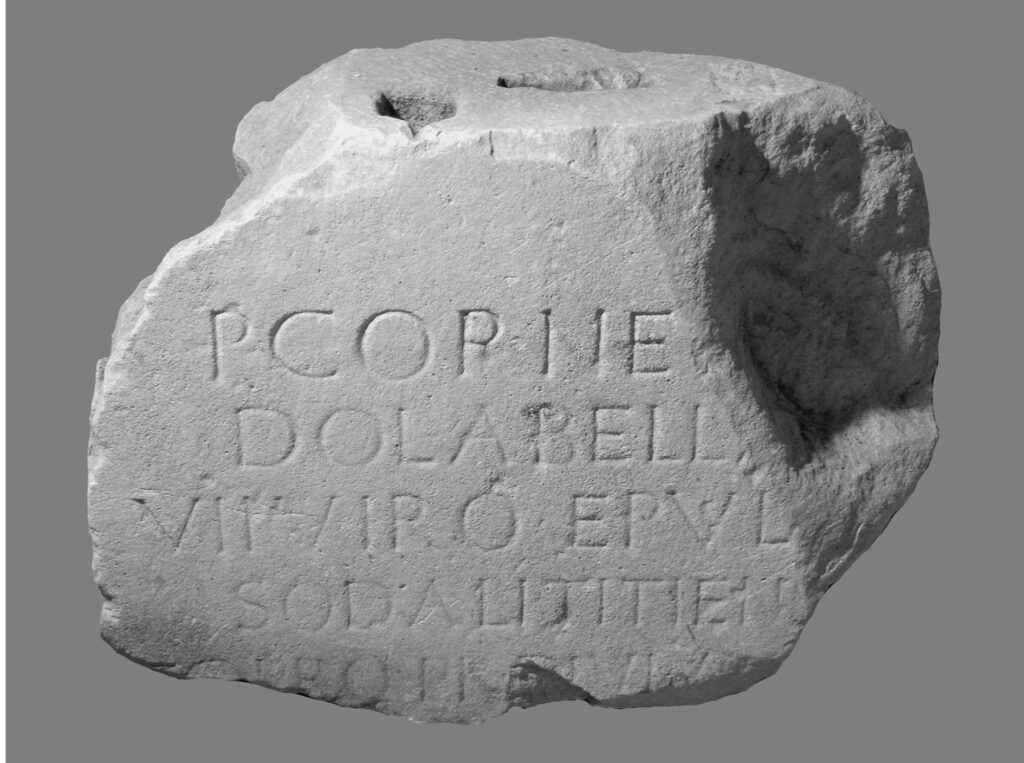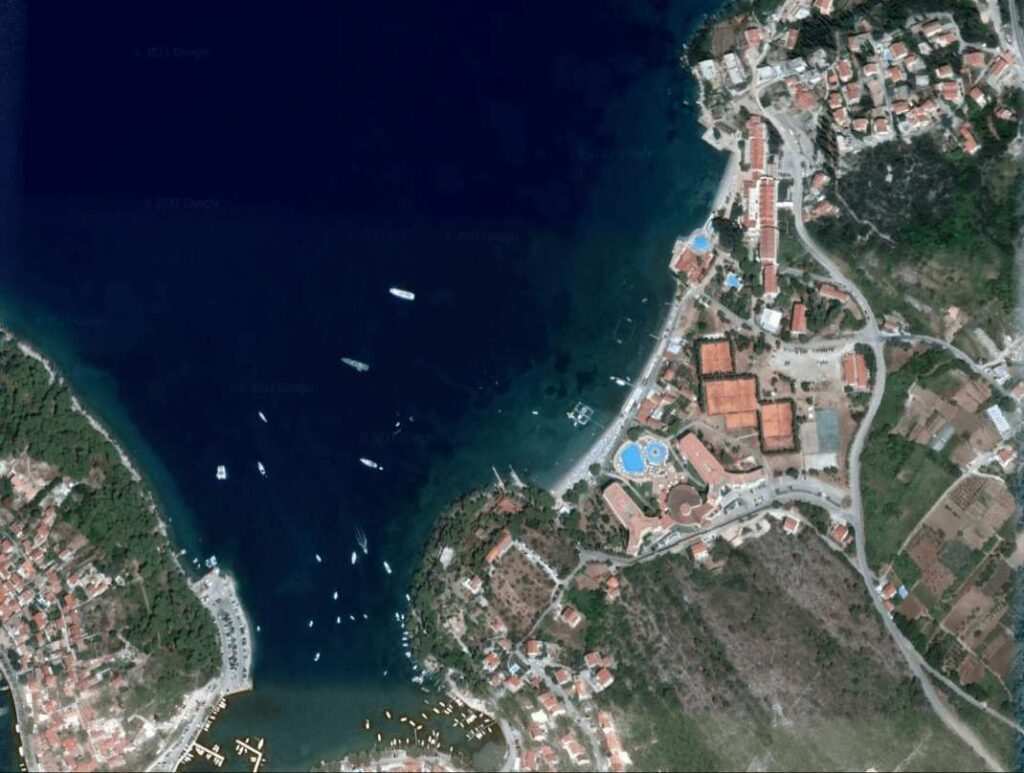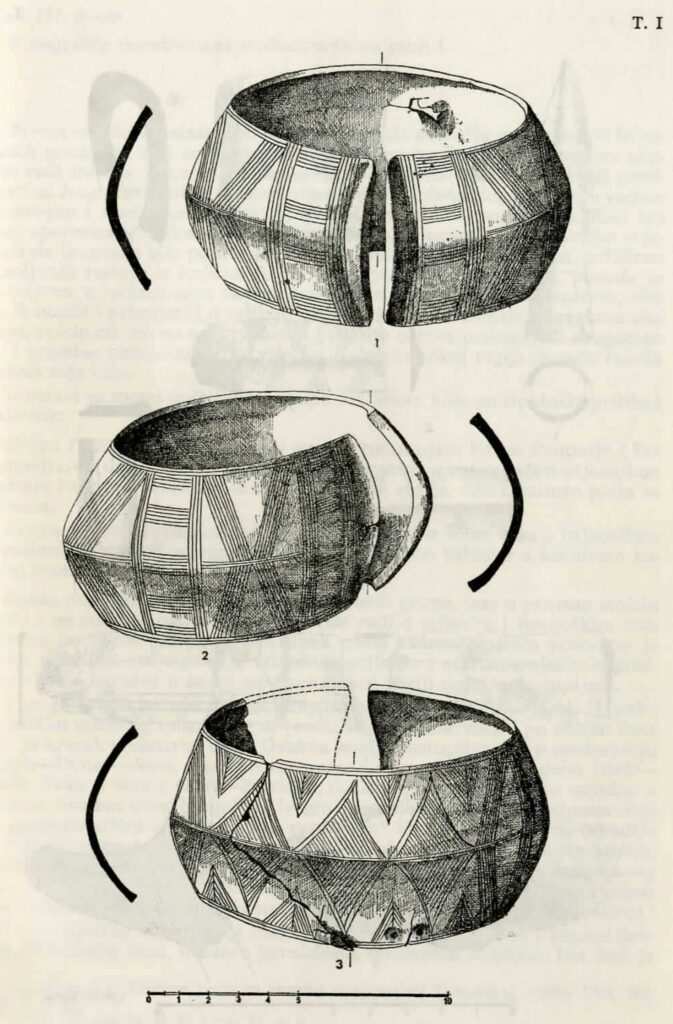Donji Obod is an area of great archaeological significance in terms of research on not only the Roman colony of Epidaurum, but also an Illyrian settlement which most likely preceded the existence of the ancient Roman town. Unfortunately, the historical imprint of the latter is almost unreadable due to the preparatory actions for the construction of tourism and hospitality facilities dating as far back to the 1950s, and to which the destruction of archaeological remains, is attributed.
In 1982, Ružica Drechsler-Bižić, a famous Croatian archaeologist and a long-time head of the Prehistoric Department at the Archaeological Museum in Zagreb, published a paper titled ‘A Late Bronze Age hoard from the vicinity of Cavtat’. The artefacts analyzed in the paper, which were found during the excavation of the foundations for the tourist facilities in Donji Obod in 1950, were given to Drechsler-Bižić by Duje Rendić Miočević.
Nine bronze artefacts, both complete and fragmented, were uncovered, along with a fragment of a ceramic vessel. It is presumed the artefacts in question formed a hoard, i.e. a find of a large number of objects of same or different type that were buried in the ground for later retrieval and use due to war or other calamities. Bearing in mind that the hoard in question contained three ornamented bronze bracelets, a bronze spear, a fragment of raw bronze, a fragment of a bracelet, two fragments of a bronze sheet, a fragment of a sickle handle and a fragment of the handle of a large ceramic vessel, it may be concluded that the metal objects were stored inside the ceramic vessel and buried into the ground during some time of calamity.
Considering the fact that the finds were metal objects intended for various purposes, the author presumes that they formed a hoard belonging to a smelter, who gathered the artefacts in question for melting and further processing. Taking into consideration the typology of the finds, the hoard was deposited somewhere in the Late Bronze Age.
The Donji Obod area has always been of great interest to the explorers and the classical antiquity enthusiasts ever since the time of the Republic of Dubrovnik. A document of great archaeological importance is a booklet whose printing was commissioned by the Dubrovnik notary, Marko Silvije, in Rome in 1547. In the booklet, Marko Silvije describes a find uncovered in Donji Obod in 1541 – a monument with an inscribed dedication to Publius Cornelius Dolabella, the Roman governor of Dalmatia. As can be concluded from the engraved inscription, the monument in question was in fact a pedestal for a statue of Dolabella. Marko Silvije describes the circumstances in which the inscription was found, while also noting the presence of fragments of several different sculptures and other architectural remains, which were scattered around the pedestal.
During his canonical visitation to Cavtat in 1716, Giovanni Battista Conventati, the Archbishop of Dubrovnik, described Dolabella’s inscription, as well as the site at which it was found. Theodor Mommsen, a renowned archaeologist and historian, published the aforementioned inscription in the second/third edition of his Corpus Inscriptionum Latinarum in 1873; the publication in question is an extremely important collection of Latin inscriptions. However, by that time, only five of the nine lines originally recorded by Marko Silvije were preserved. The inscription contains a dedication to Dolabella, the governor of the divine Augustus and Tiberius, along with his political and religious functions – consul, septemvir, epulonum, sodalis Titiensis – while the lost lines contain the information of his appointment as governor by the communities of the Upper Illyricum. The inscription itself is today kept in the Baltazar Bogišić Collection in Cavtat.

From: Archaeologia Adriatica II, 2008.
The site was examined by the world-famous archaeologist Sir Arthur Evans in 1878; however, what Evans uncovered were merely the remains of an unidentified architectural complex. The monument erected at this location attests to the previous existence of an urbanized space – a suburb – due to the fact that the road connecting Epidaurum to the important main route connecting Aquileia to the East, i.e. the section of the road in question from Narona to Skodra. This notion is supported by not only the archaeological research conducted so far, but also by the accidental finds related to the construction of large tourist complexes, both built and planned.
The coastal area of Donji Obod was urbanized via both public and private buildings, some of which were rather luxurious and equipped with heating systems and mosaics. It would be appropriate and, according to recent archaeological research, rather feasible to exhibit such a section of the past and present it to the general public. Such an endeavour would add new value to the over-touristified Donji Obod area.


